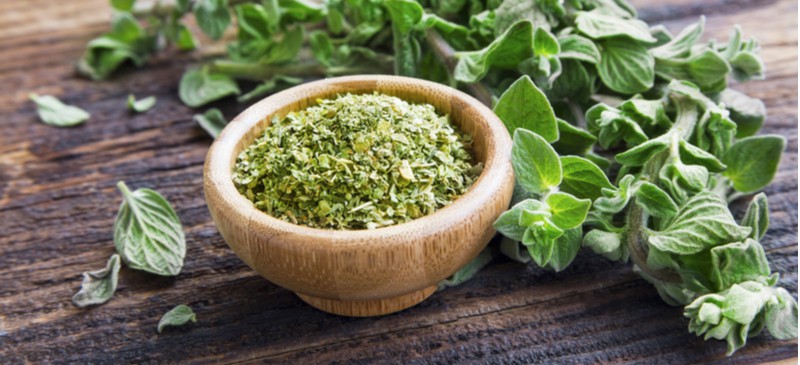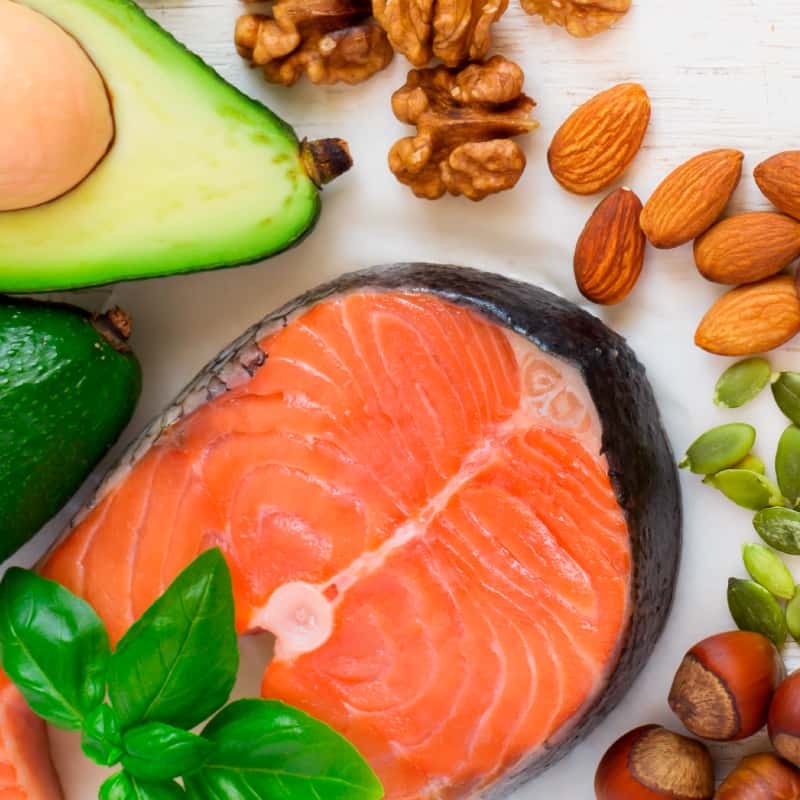This Dr. Axe content is medically reviewed or fact checked to ensure factually accurate information.
With strict editorial sourcing guidelines, we only link to academic research institutions, reputable media sites and, when research is available, medically peer-reviewed studies. Note that the numbers in parentheses (1, 2, etc.) are clickable links to these studies.
The information in our articles is NOT intended to replace a one-on-one relationship with a qualified health care professional and is not intended as medical advice.
This article is based on scientific evidence, written by experts and fact checked by our trained editorial staff. Note that the numbers in parentheses (1, 2, etc.) are clickable links to medically peer-reviewed studies.
Our team includes licensed nutritionists and dietitians, certified health education specialists, as well as certified strength and conditioning specialists, personal trainers and corrective exercise specialists. Our team aims to be not only thorough with its research, but also objective and unbiased.
The information in our articles is NOT intended to replace a one-on-one relationship with a qualified health care professional and is not intended as medical advice.
Oregano Benefits for Inflammation, Infections & More
December 18, 2023

Although many people think of it as the herb that’s sprinkled on top of pizza or into pasta sauces, oregano has been considered a precious plant for over 2,500 years in folk medicines around the world. It’s one of the top herbs for healing because of its antioxidant and antibacterial activity.
With powerful antioxidants and components that help fight bacterial and viral infections, this common herb holds important space in both your kitchen and medicine cabinets. Although oregano oil is much more concentrated and has greater therapeutic potential, cooking with oregano has its health benefits, too.
What Is Oregano?
Oregano (Origanum vulgare) is an herb that’s a member of the mint (Lamiaceae) family. It has been used for thousands of years in folk medicines to treat upset stomach, respiratory complaints and bacterial infections.
Oregano leaves have a strong aroma and slightly bitter, earthy flavor. The spice was used in ancient Egypt and Greece to flavor meats, fish and vegetables.
Oil of oregano contains two powerful compounds called carvacrol and thymol, both of which have been shown in studies to have strong antibacterial and antifungal properties.
Oregano’s oil is primarily made of carvacrol, while studies show that the plant’s leaves contain a variety of antioxidant compounds, such as phenols, triterpenes, rosmarinic acid, ursolic acid and oleanolic acid.
Types/Varieties
There are several types of oregano offered across the globe. Common oregano is known as “origanum vulgare” and is also called “wild marjoram.”
The varieties that are most popular for cooking are Greek oregano and Italian oregano. The Greek variety is more pungent, while the Italian type has a sweeter aroma.
Some other varieties include:
- Syrian oregano
- Golden oregano
- Curan oregano
- Mexican oregano
There are also varieties that are not consumed but used for decorative purposes. This includes pilgrim oregano, amethyst falls oregano and hop-flower oregano. These types have colorful flowers and grow easily in gardens.
Benefits
The leaves and dried versions are excellent sources of antioxidants and antibacterial compounds. Most studies involving the herb are done with its essential oils, which is a more concentrated form and has greater efficacy for promoting overall wellness and healthy aging.
Research shows that this herb has the following benefits:
1. Antioxidant Powerhouse
Oregano is jam-packed with health-promoting antioxidants, including limonene, thymol, carvacrol and terpinene. In fact, it’s one of the top antioxidant foods with an oxygen radical absorbance capacity (ORAC) score of 159,277. (That’s high!)
There are numerous benefits of eating foods high in antioxidants. They help slow the effects of aging by reducing free radical damage, which can contribute to many health issues and premature aging.
Antioxidants positively impact your skin, eyes, heart, brain and cells as well.
Studies on oregano extracts show that the herb’s antioxidant effects are likely attributed to carvacrol and thymol, two components that have therapeutic and preventative purposes in folk medicine.
2. Has Antibacterial Properties
Several studies indicate that oil of oregano has antibacterial effects against a range of bacterial strains. There’s even research supporting the use of the oil as an alternative to harmful antibiotics for a number of health concerns.
One study found that oil of oregano possesses the highest antibacterial activity against E. coli, suggesting that the extract can be used to promote gastrointestinal health and prevent food poisoning.
What does this mean about the oregano leaves you add to your pasta sauce? They contain two important compounds, thymol and carvacrol, which help fight bacterial infections.
That said, using the more concentrated essential oil is far more effective for killing bacteria.
3. Reduces Inflammation
Cooking with this health-promoting herb, whether it’s dry or fresh, may help reduce inflammation. Studies on the herb’s essential oils show that it contains powerful anti-inflammatory properties.
This is due to the plant’s antioxidant activity, which helps improve chronic inflammation and a long list of diseases, including cancer and Alzheimer’s disease.
Oregano products are used to relieve inflammatory conditions including allergies and rheumatoid arthritis. Herbal extracts are also used topically to reduce issues like insect bites, psoriasis, acne and muscle pain.
4. Helps Digestive Issues
Several of the active compounds found in Origanum vulgare can help aid digestion by relaxing the muscles of the GI tract and also helping balance the ratio of good-to-bad bacteria in the gut.
Thymol, one of oregano’s active compounds, may help relax the soft tissue of the throat and stomach, which can help to decrease GERD, heartburn and discomfort after eating.
A 2014 study published in Global Advances in Health & Medicine found evidence that use of herbal antimicrobials is just as effective as the antibiotic usually given for the treatment of SIBO. When 104 patients diagnosed with SIBO (via lactulose breath test) were treated either with rifaximin (1,200 milligrams) or herbal antimicrobials over the course of four weeks, the results showed that 46 percent of the patients treated with herbal antimicrobials experienced symptom improvements compared to only 34 percent treated with the antibiotic rifaximin.
5. Fights Viral Infections
Carvacrol, one of the main components in oregano, has been shown to possess antiviral properties. This enables oregano oil to delay viral disease progression and improve resistance to infections.
Again, these studies use the herb’s essential oil, which is far more concentrated than consuming fresh or dried leaves. However, they does highlight the beneficial compounds that are present in the plant.
6. May Help Improve Cholesterol Levels
Research published in the Journal of International Medical Research suggests that adding oregano oil supplementation can improve cholesterol levels.
For the study, 48 patients with mild hyperlipidemia were given lifestyle and low-fat dietary advice. Thirty-two of the patients (study group) were prescribed 25 milliliters of oregano distillate to be taken after each meal for three months, and the remaining 16 patients were the control group.
After the three-month study period, those in the study group showed significantly greater increases in high-density lipoprotein (HDL) cholesterol and significantly greater decreases in low density lipoprotein (LDL) cholesterol compared to the control group.
Nutrition
One teaspoon (about a gram) of oregano leaves contains approximately:
- 3.1 calories
- 1.9 carbohydrates
- 0.1 grams protein
- 0.1 grams fat
- 0.4 grams fiber
- 6.2 micrograms vitamin K (8 percent DV)
On teaspoon (about 2 grams) of dried oregano contains approximately:
- 5.4 calories
- 3.4 carbohydrates
- 0.2 grams protein
- 0.2 grams fat
- 0.7 grams fiber
- 10.9 micrograms vitamin K (14 percent DV)
- 0.8 milligrams iron (4 percent DV)
- 0.1 milligrams manganese (4 percent DV)
- 27.6 milligrams calcium (3 percent DV)
How to Add to Diet (Recipes)
It’s easy to add oregano spice and leaves into your everyday diet. It’s commonly added to Mediterranean dishes and serves as a versatile spice for sauces, stuffings, soups and salads.
It can be sprinkled on homemade pizzas, soups and doughs too.
Need some recipe ideas that incorporate this health-promoting herb? Try these:
- Homemade Chicken Marsala with ghee and Paleo flour
- Zesty Turkey Salad with beans, walnuts and fresh herbs
- Olive Tapenade Recipe with olives, fresh herbs and sun-dried tomatoes
Need some tips on optimizing freshness when cooking with this herb? Chopping or crushing the leaves provides more flavor, and add it in at the end of the cooking process for the best results.
Using fresh leaves gives you more flavor too. Thankfully, the herb is super easy to grow at home and even thrives in a pot on your windowsill.
Risks and Side Effects
Consuming dried or fresh oregano is safe in normal amounts, when added to recipes. People who are allergic to herbs within the Lamiaceae family, like mint and basil, should be cautious when eating it for the first time.
The oil is much more concentrated and should only be consumed for short periods of time, at a maximum of two weeks. It should also be diluted with water or coconut oil when taken internally.
The essential oil should also be diluted when applied topically to fight infections or reduce inflammation.
Conclusion
- Oregano has been used for thousands of years for therapeutic and culinary purposes.
- The herb has powerful antioxidant, antibacterial, antiviral and anti-inflammatory effects. Although the herb’s essential oils are more potent and provide greater therapeutic benefits, adding dried or fresh leaves to recipes is an excellent way to consume the plant’s antioxidants.
- It’s easy to cook with the herb. It goes well in any Mediterranean recipe, including sauces, fish and meat dishes, soups and salads.









